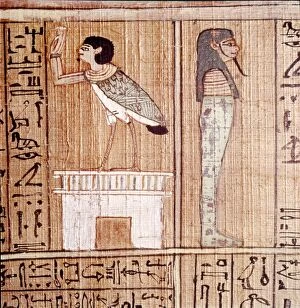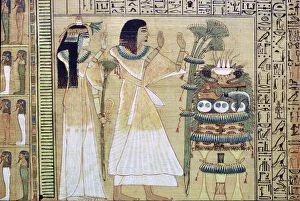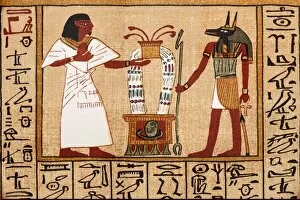Papyrus Of Ani Collection
The Papyrus of Ani, a remarkable artifact from ancient Egypt
All Professionally Made to Order for Quick Shipping
The Papyrus of Ani, a remarkable artifact from ancient Egypt, offers us a glimpse into the beliefs and rituals surrounding death and the afterlife in Thebes around 1250 BC. This beautifully preserved Egyptian papyrus is often referred to as the Book of the Dead. One captivating scene depicted on this papyrus is known as "The Judgment Scene. " Here, we see Ani's heart being weighed in the balance against Ma'at's feather. It was believed that if his heart was found to be lighter than the feather, he would be granted eternal life. This momentous event showcases the importance of leading a righteous life according to Ma'at's principles. Another striking image within this ancient document portrays "The Presentation of Ani to Osiris. " In this scene, Ani is shown being presented before Osiris, god of the underworld and judge of souls. With arms outstretched in reverence, Ani seeks acceptance into Osiris' realm for an everlasting existence. Among other intriguing depictions found on this papyrus are scenes such as "Ani Ploughing, " which symbolizes rebirth and renewal; "Mourners Ancient Egyptian Funeral Procession, " illustrating mourning customs during funerals; and "A man and his wife making offerings to Osiris, " highlighting devotion towards deities even after death. Furthermore, we encounter fascinating representations like "Ani as a swallow" or two soul-birds (Bas). These images suggest that these winged creatures were thought to guide and protect Ani's soul throughout its journey beyond earthly realms. As we explore these intricate illustrations on the Papyrus of Ani, we gain insight into how ancient Egyptians perceived death not merely as an end but rather as a transition into another existence. Through their elaborate rituals and beliefs documented in this extraordinary artifact from over three thousand years ago, they sought eternal life by aligning themselves with divine forces while embracing moral righteousness.











